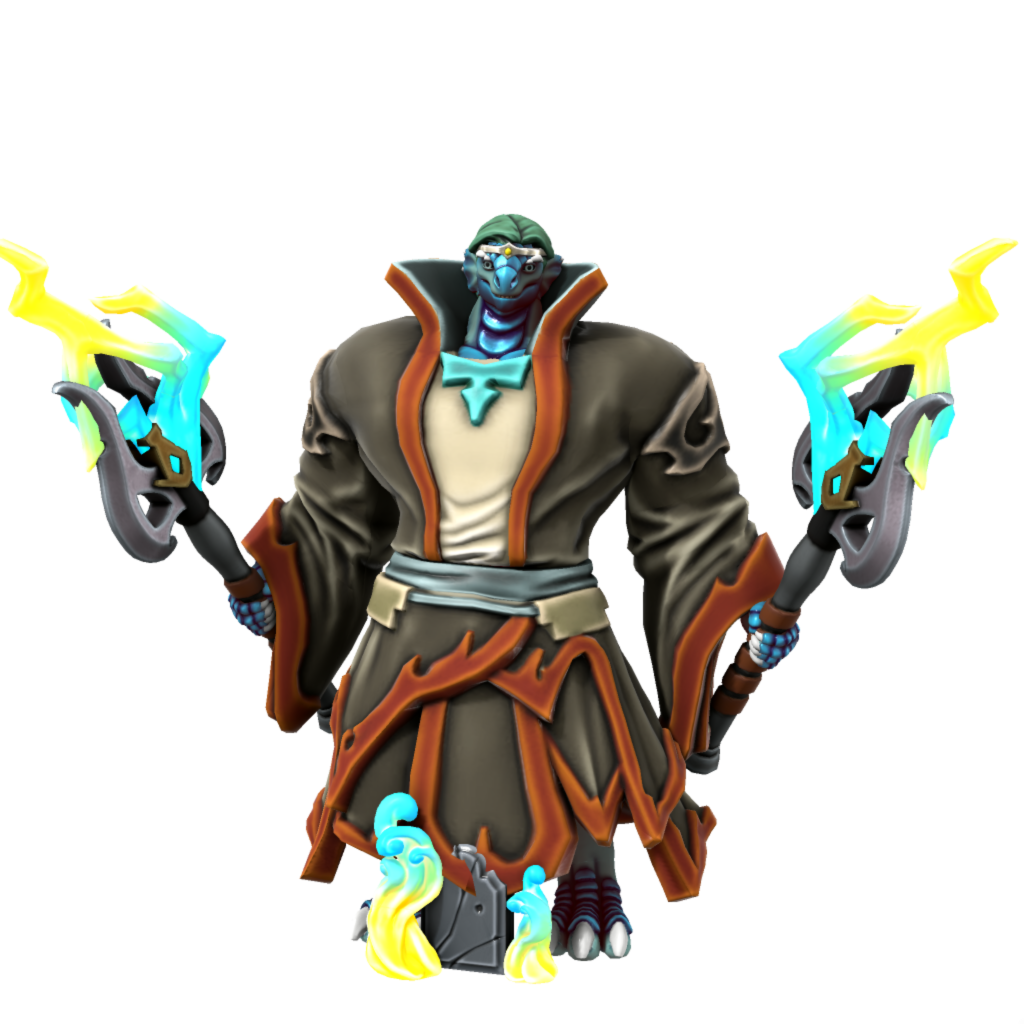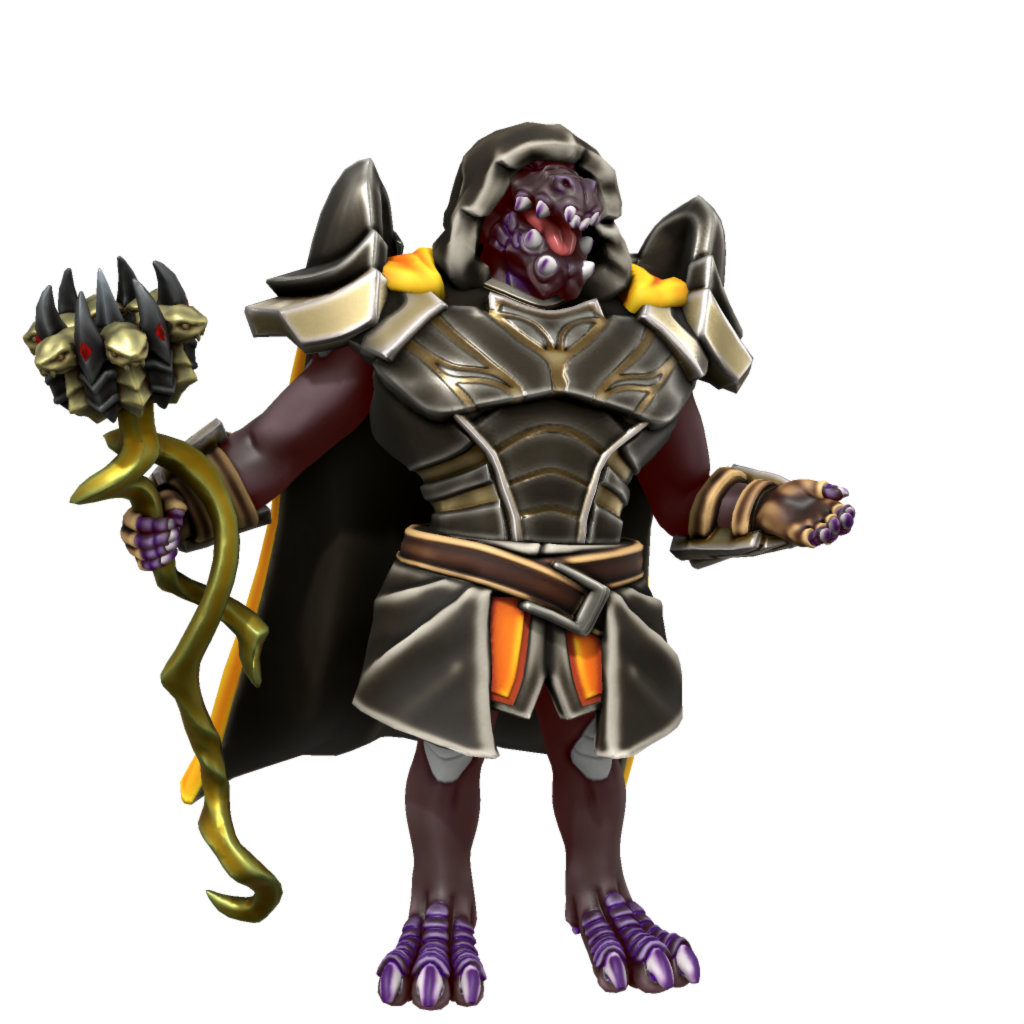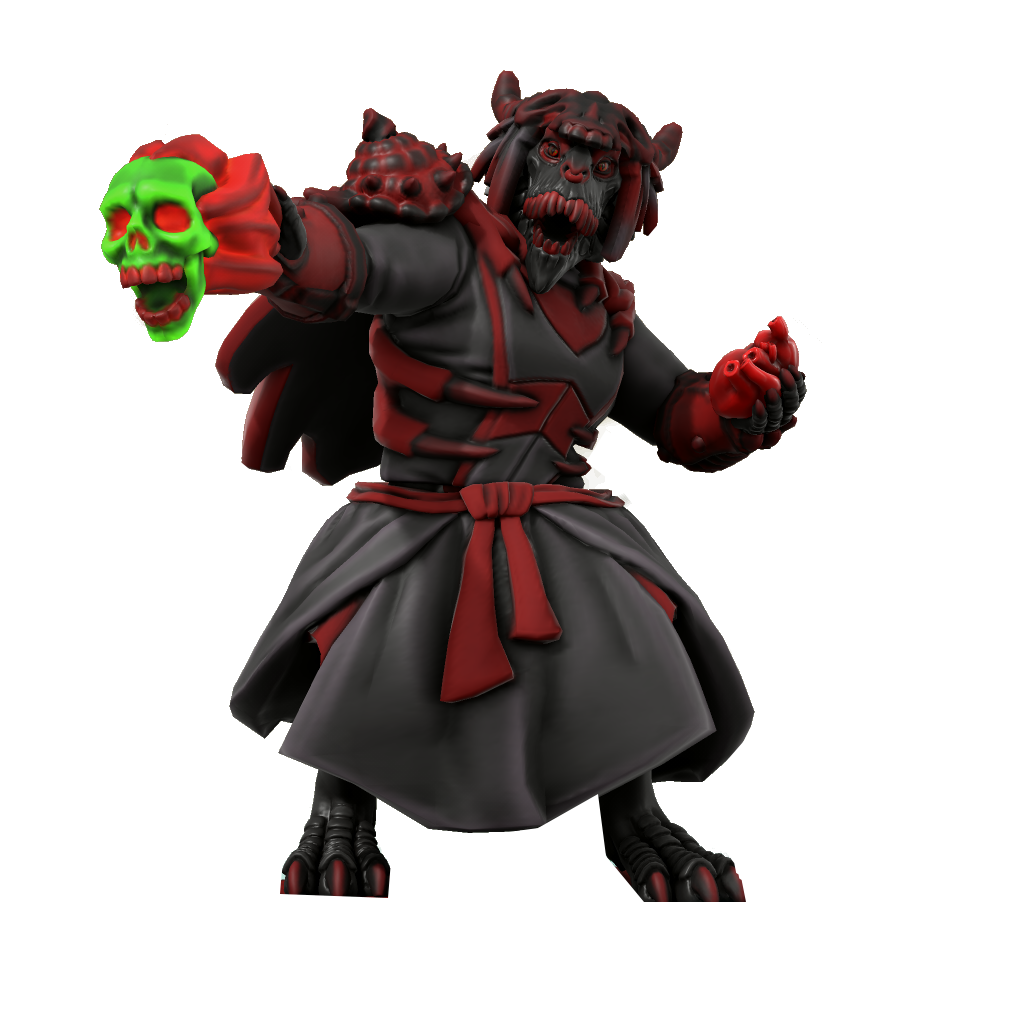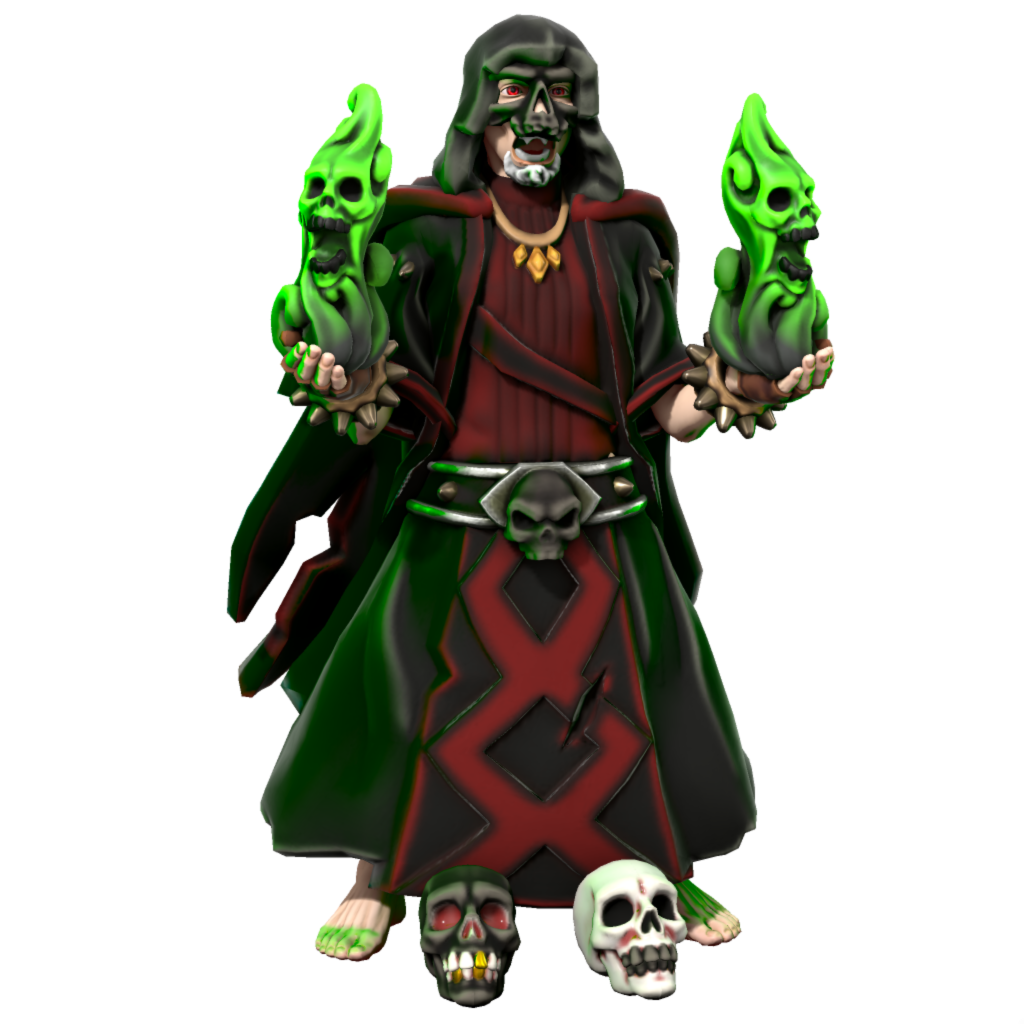Necromancy is the
Magical art of raising corpses from the dead.
Necromancy Techniques
Unlike other Magical arts like
Puppetry, there is no specific list of ways to do necromancy. Most necromancers do it in different ways, so the best thing to do is search for the best way you can reanimate a corpse.
Here are some famous techniques:

Onkesh Tazwunak by Jarhed
Shocked to Life
Onkesh Tazwunak used his lightning to raise corpses from the dead. He would often shock the body in specific spots, which he called lightning points, until the shock jolted the body to move.
These lightning points are where they are because the connect to the brain. Once the lightning reaches the brain, the brain makes the body move for a small moment. Onkesh continues this, shocking the brain and forcing it to continuously move as he wishes.
With enough lightning, he was able to revive them to be fully conscious, and obeying him as his magic courses through the now fully reanimated corpse.
Rituals of the Dead
Onkesh's father and predecessor as Chief of Evity, Drorthod Lormorn, does not use the same practice as Onkesh. Drorthod instead sticks to the basic practice of necromancy, as had the Lormorn family before him.
They would carve ritual circles in the ground either above a grave, or dig out the corpse and place it on the circle. Then, they chant a specific ritualized chant, pour their magical power into the circle, and the corpse is revived.
There are many advanced rituals which can summon all sorts of crazy reanimated creatures. This will be expanded upon in the advanced necromancy section of the article.
Bone Control
Another technique that can be used is bone control. Some necromancers unlock Bone Magic as their Impossible Magic, which allows them direct control over bones and, thus, skeletons.
Mind Linking
Mind Linking is a technique where necromancers put chunks of their own brains into corpses, controlling the corpse by sharing a consciousness with it. More skilled necromancers can make smaller bits of brain to control more corpses than novice necromancers.
The Talisman
A method used by Kaltoth Vracrath, Talismans are considered the most humane of necromancy tools.

Coldrid Saxan by Jarhed
All that is needed is to do a ritual on a necklace or other item, and then place it on a corpse. This reanimates it, and can be taken off at any time if the user wishes to stop the corpse or if someone wishes to take out said corpse.
The Darkness Within
Coldrid Saxan uses his dark magic to control corpses. He creates balls of dark magic which spread out inside of the corpses, granting him full control.
With skeletons, this is placed inside the skull. With other corpses, it is often where the heart once was, or may still be depending on the corpse. Coldrid believes in controlling corpses through the heart as he knows all too well what that feeling of being controlled with your heart is like.
Connection
One more technique is that of connecting to the corpse to raise them. Some necromancers find their connection to the corpse is stronger if they dress in the clothes the dead person used to wear, eat the same thing they used to eat.
Others instead connect to death itself, wearing the clothes of the deceased, eating foods related to darkness or death, and reaching out in that way.
Necrotic Harm
Necromancy can also be used in the opposite way, rather than bringing the dead to life, it can be used to bring the living closer to death.
By harnessing the power of life that someone carries with them, necromancy can be channeled into the hearts of people. With this, people can be harmed with the very power of death itself.
Necrotic Regeneration
Not the easiest of basic tricks to pull off, necrotic regeneration is often considered the weakest form of healing possible.
Necrotic Regeneration does not exactly heal anything. Instead, it replaces any destroyed parts of the body with new dead cells that will function almost like the basic cells do. However, they are only temporary replacements, and will eventually fade away. It only prevents it from being unhealable when an actual healer is available later on, or brings someone who was taken out of a fight back in temporarily.
Necromantic Summons
Necromancy can be used to raise any corpse. It depends on the power of the necromancer what they are able to raise.
The part of necromancy that is well known is that necromancy can be used to raise a specific corpse. Someone they want alive, either for personal reasons or combat reasons.
However, there is also a progression of necromancy summons which can be summoned as a necromancer gets stronger.
Basic Summons
There are many basic summons, small creatures that can be raised from the dead. The list of these creatures include Wolf Bodies, Swarms of Vampire Bats, and a dead Mimic.
While there are many other small creatures as Basic Summons, these three in specific are the most common. Wolf Bodies are good for tracking and combat, the same goes for Swarms of Vampire Bats, while dead Mimics can be used for storage on the go.
Normal skeletons are also summonable in this tier of summons. They do not have much power, and are defeated quite easily by attacking the joints. However, large groups are quite troublesome.

Evity Skeleton by Jarhed
Advanced Summons
The second level of summons include things like Evity Skeletons. These are the skeletons of corpses killed in Evity long ago.
Unlike normal skeletons, which are easily defeated, Evity Skeletons are actually quite tough. Their joints are held in place by magic, and their bones have hardened overtime with necrotic energy reinforcing them.
There are many types of Evity Skeletons, one for every race on Totania. However, the most common ones to find are Human-passing (either Humans or Elves normally), as well as those of Gnomes and
Draconians, as those are the most common groups to die in Evity.
This is also the tier where Ghouls are summonable, mindless evil
Ghosts.
Ascended Summons
Creatures of the Void are reachable in the Ascended Summons, an even higher tier than Advanced. This allows for necromancers to call forth the power of all sorts of Demons and Undead creatures, like Shadows.
Reaching the level of Ascended Summons is considered the greatest honor for a necromancer, as they are now able to call on the forces of Undead from an entire other plane of existence and command them. However, there is still one tier of Summons higher than Ascended.
Inadvisable Summon
There is a terrifying and powerful summon that is possible to reach once one has mastered the Ascended Summons. It is not advised to use this summon, as it is strong and difficult to keep control over. Yet some necromancers insist anyway.

Dead Men by Jarhed
Insist on summoning the Dead Men. Dead Men are the strongest summonable undead creature, the corpses of men and women who died to Death Magic.
They harness the power of death itself, not only being near unkillable skeletons, but also wielding shields that also carry the same kind of skeletons on them.
Their armor is not pierceable by any common physical means, and they can only be killed with magic. Their hits do not simply hurt, but each time they hit someone, that person feels closer and closer to death. Their body begins to tense up, their heart beats slower and slower, and they begin to struggle to move. They fight back less and less before their body accepts death before it ever should come, even if their mind is still struggling.
Dead Men are not controlled by a necromancer, at least not by any necromancer that has just begun making them. This means that most people who summon Dead Men often have the Dead Men turn on them. The only necromancers on record who have been able to control Dead Men are those that have practised with them for decades, who have intimate knowledge of the Dead Men.
Advanced Necromancy
There are many forms of Advanced Necromancy, which are techniques that only the greatest necromancers have ever been able to pull off. One could count the necromancers able to use these techniques on their fingers (if they have the standard ten fingers that most races have, that is).

N'hog'zadh'goz by Jarhed
Lich
The first, and most well known of these techniques, pertains to the
Lich. While the specifics of the Lich will not be delved into in immense detail here, let it be known that it is an extreme way for a necromancer to keep themselves alive.
Mind Transferral
The advanced version of Mind Linking, Mind Transferral is the natural progression.
Rather than inserting small chunks of brain into corpses, this is the process of putting the entire brain into a body. Then, with the connection to the weave transferred, and a bit of necromancy magic, they can transfer their soul into the corpse alongside the brain. This allows the caster to live even after their body has died out, as they can get new bodies.
Some necromancers say it is possible, though incredibly difficult, to do this with multiple bodies. As it stands now, no one has been able to pull this off.
However, it is believed that at least one citizen of Evity is an ancient necromancer who has transferred their consciousness over through at least one corpse, if not hopping from corpse to corpse as each body begins to die. There is no current theory as to who could be this hidden ancient necromancer.

Nawunax Valdacmith by Jarhed
Necrotic Healing
Necrotic Healing is an advanced version of Necrotic Regeneration.
It must be activated before the target of the spell dies, or else it will not take effect. Anyone who is dead before it is used will stay dead. However, if activated before, and someone dies, they will be brought back to life.
To explain the exact way it works, let us use the example it is most known for. Its originator, fifth
Grand Wizard Nawunax Valdacmith. Nawunax used it on himself, always preventing himself from dying. He would be killed, and immediately he would revive.
It would not, however, prevent him from dying, it would simply undo the death that occured. The body dies, and then stops itself from staying dead by healing itself to the state it was in before being killed. This is why the only way he could be killed was for his entire body to be erased from existence.
However, there is a price for this, and it becomes clear when used to undo someone else's death. It would bring them back at their full, initial living state. However, it would kill the spellcaster. The cost of Necrotic Healing is the life of the caster, but if you use it on yourself it will then bring you back to life anyway, so this creates an infinite loop. The only finite use of it is using it on someone else.
There is no known necromancer after Nawunax who was able to use this technique. The Nurdesh family of
Tamd ensured it was lost to history.
Demonic Summoning
The last known advanced form of necromancy, Demonic Summoning calls upon the power of a Demon to do the dirty work of necromancy. It does not require any magical power from the caster, nor do they need to control the corpse.
Instead, they summon a Demon to inhabit the corpse. This revives the Demon into the body, and can even be used to summon a Demon Lord into the corpse if the corpse is strong enough to handle it. If this happens, it creates an artificial form of Demonic Possession, an equivalent to
Area Devil Abilities and the Holy Might of
Gods.
The danger in this one, aside from simply finding a way to do the ritual, is that you can't be sure the Demon will not turn on you. They control the will of the body, and can even control the will of the one that summoned them if they please. It is advised to not do Demonic Summoning, or to at least be careful if you do.

Mimir by Jarhed
Holy Necromancy
Mimir is the God of Necromancy, and therefore much of his teachings are known to be about necromancy. The exact teachings are unknown, partially due to Mimir being the God of Secrets as well and normally killing anyone who reveals his secrets.
However, it is believed, that the other reason it is not known or seen is because it is near impossible for any mortal to achieve Mimir's level of necromancy. It is, after all, the necromancy of a God.
Necromantic Literature
The term Necromantic has come to have two definitions in literature.
The first is that of the opposite of the romantic hero tale, where heroic deeds are romanticised. Necromantic tales, instead, show the darker side of an otherwise heroic figure. It is a counterpoint of Romantic stories, and was created by Evity scholars that disliked the stories of
Ealla.
The second is much more disturbing, being a response to this response. Ealla made Necromantic stories that featured necrophilia, where necromancers would either fall in love with a resurrected corpse, or would try and revive a loved one with necromancy to still love them even in death. Many consider this genre flat out disgusting, but some necromancers have refused to comment for one reason or another...

Comments